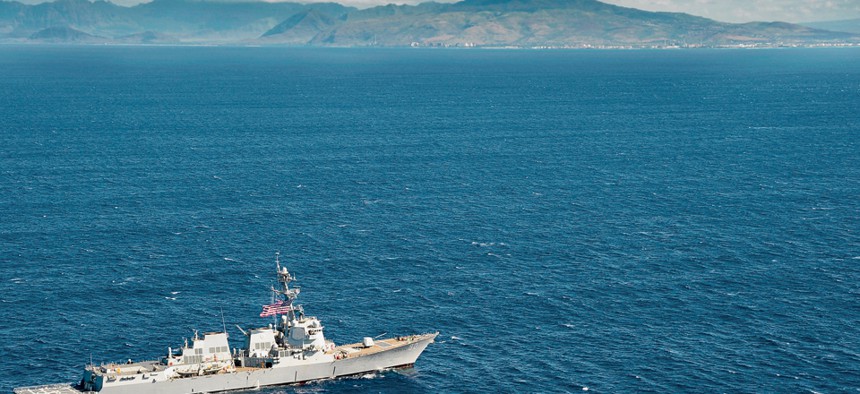
Diana Quinlan/United States Navy
The Pivot To Asia Hits Rough Waters
The U.S. military’s rebalance is not only a geographical challenge, but also a budgetary one as service leaders press for more resources.
Military commanders in the Pacific have a long list of things they need to carry out the Pentagon’s much-publicized pivot to the Asia-Pacific region. More follow-on forces, more submarines, more amphibious ships.
Budget constraints are clearly affecting President Obama’s plan to beef up the military’s presence in Asia, and just how much is starting to become clearer. Adm. Samuel Locklear, commander of the U.S. Pacific Command, and Gen. Curtis “Mike” Scaparrotti, commander of U.S. forces in South Korea, laid out what they need to carry out the mission at a recent Senate Armed Services Committee hearing.
“The forces in the theater have been fully resourced, despite the budget constraints that we’ve had. I’m happy with that and appreciative of it,” Scaparrotti said. But going forward, he said he is concerned about the “readiness of follow-on forces” in the region—forces that would be necessary to back up troops in the event of a crisis or attack.
“In our theater,” Scaparrotti said, “given the indications and warnings, the nature of this theater and the threat that we face, I rely on rapid and ready forces to flow into the peninsula in crisis.”
Locklear said he’s asked for more “amphibious lift” for the five amphibious readiness groups in the region. “To get Marines around effectively, they require all types of lift, they require the big amphibious ships, but they also require connectors,” he told the committee, referring to craft that take Marines from ship to shore. “I have asked for additional amphibious lift to be put into the Pacific, and that request is under consideration.”
Locklear also said his requirements for attack submarines are “not all being met.” Under current budget plans, the military’s attack submarines will decline from 55 in 2013 to 42 in 2029, according to Sen. Kelly Ayotte, R-N.H.
Locklear and Scaparrotti pointed out gaps in coverage to an area of the world that is a dominate part of Obama’s military strategy, despite continuing conflicts in the Middle East and Africa and new challenges with Russia. Their comments come on the heels of a controversial admission by a top Pentagon official that the pivot to Asia “can’t happen” because of budget cuts.
In March, Katrina McFarland, the assistant secretary of Defense for acquisition, told a conference in Arlington, Va., that “right now, the pivot is being looked at again, because candidly it can’t happen.” McFarland quickly backtracked her statement, saying through a spokeswoman that “the rebalance to Asia can and will continue.”
But the region has special needs, because of the makeup of its geography and the nature of the threat, Locklear and Scaparrotti noted. Pacific Command’s geographic region, or “area of responsibility,” according to Locklear, makes up 50 percent of the world’s surface. Of that 50 percent, 17 percent is land and 83 percent is water. Six out of every 10 people in the world live on that 17 percent of land.
And the threat from China and North Korea is a different kind of threat than in other areas of the world, and would require a swift and strong response. “On the Korean Peninsula, the nature of the fight is potentially high-intensity combat, and the time and space factors also present a tough problem for us. So the delivery of ready forces on a timeline is important,” Scaparrotti said.
NEXT STORY: The Forum







